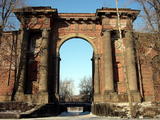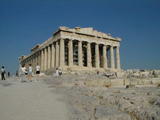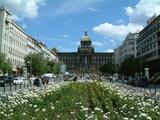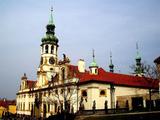skip to main |
skip to sidebar
Travel Wallpaper - Saint Petersburg Traveling, Russia  Saint Petersburg is a city and a federal subject of Russia located on the Neva River at the head of the Gulf of Finland on the Baltic Sea. The city's other names were Petrograd and Leningrad. It is often called just Petersburg and is informally known as Peter. Founded by Tsar Peter I of Russia on 27 May, 1703, it was the capital of the Russian Empire for more than two hundred years (1713–1728, 1732–1918). Saint Petersburg ceased being the capital in 1918 after the Russian Revolution of 1917. It is Russia's second largest and Europe's fourth largest city (by city limit) after Moscow, London and Paris.[citation needed] The city has 4.6 million inhabitants, and over 6 million people live in its vicinity. Saint Petersburg is a major European cultural center, and an important Russian port on the Baltic Sea.
Saint Petersburg is a city and a federal subject of Russia located on the Neva River at the head of the Gulf of Finland on the Baltic Sea. The city's other names were Petrograd and Leningrad. It is often called just Petersburg and is informally known as Peter. Founded by Tsar Peter I of Russia on 27 May, 1703, it was the capital of the Russian Empire for more than two hundred years (1713–1728, 1732–1918). Saint Petersburg ceased being the capital in 1918 after the Russian Revolution of 1917. It is Russia's second largest and Europe's fourth largest city (by city limit) after Moscow, London and Paris.[citation needed] The city has 4.6 million inhabitants, and over 6 million people live in its vicinity. Saint Petersburg is a major European cultural center, and an important Russian port on the Baltic Sea.
 Saint Petersburg is often described as the most Western European city of Russia. Among cities of the world with over one million people, Saint Petersburg is the northernmost. The Historic Centre of Saint Petersburg and Related Groups of Monuments constitute a UNESCO World Heritage Site. Russia's political and cultural center for 200 years, the city is sometimes referred to in Russia as the northern capital. A large number of foreign consulates, international corporations, banks and other businesses are located in Saint Petersburg.
Saint Petersburg is often described as the most Western European city of Russia. Among cities of the world with over one million people, Saint Petersburg is the northernmost. The Historic Centre of Saint Petersburg and Related Groups of Monuments constitute a UNESCO World Heritage Site. Russia's political and cultural center for 200 years, the city is sometimes referred to in Russia as the northern capital. A large number of foreign consulates, international corporations, banks and other businesses are located in Saint Petersburg.
 Saint Petersburg is home to numerous parks and gardens, some of the most famous of which are situated in the southern suburbs, including one of the largest English gardens of Europe in Pavlovsk. Sosnovka is the largest park within the limits of the city proper, occupying 240 ha. The Summer Garden is the oldest one, dating back to the early 18th century and designed in the regular style. It is situated on the southern bank of the Neva at the head of the Fontanka and is famous for its cast iron railing and marble sculptures. Among other notable parks are the Maritime Victory Park on Krestovsky Island and the Moscow Victory Park in the south, both commemorating the victory over Nazi Germany in the Second World War, as well as the Central Park of Culture and Leisure occupying Yelagin Island and the Tauride Garden around the Tauride Palace. The most common trees grown in the parks are the English oak, Norway maple, green ash, silver birch, Siberian larch, blue spruce, crack willow, limes and poplars. Important dendrological collections dating back to the 19th century are hosted by the Saint Petersburg Botanical Garden and the Park of the Forestry Academy.
Saint Petersburg is home to numerous parks and gardens, some of the most famous of which are situated in the southern suburbs, including one of the largest English gardens of Europe in Pavlovsk. Sosnovka is the largest park within the limits of the city proper, occupying 240 ha. The Summer Garden is the oldest one, dating back to the early 18th century and designed in the regular style. It is situated on the southern bank of the Neva at the head of the Fontanka and is famous for its cast iron railing and marble sculptures. Among other notable parks are the Maritime Victory Park on Krestovsky Island and the Moscow Victory Park in the south, both commemorating the victory over Nazi Germany in the Second World War, as well as the Central Park of Culture and Leisure occupying Yelagin Island and the Tauride Garden around the Tauride Palace. The most common trees grown in the parks are the English oak, Norway maple, green ash, silver birch, Siberian larch, blue spruce, crack willow, limes and poplars. Important dendrological collections dating back to the 19th century are hosted by the Saint Petersburg Botanical Garden and the Park of the Forestry Academy.







Travel Wallpaper - Athens Traveling, Greece Athens is the capital and largest city of Greece, dominates the Attica periphery: as one of the world's oldest cities, its recorded history spans at least 3,000 years. The Greek capital has a population of 745,513 (in 2001) within its administrative limits and a land area of 39 km2 (15 sq mi). The urban area of Athens extends beyond the administrative city limits with a population of 3.37 million (in 2005). The area of Athens prefecture spans 412 km2 (159 sq mi) and encompasses a population of 3,192,606. The Athens Larger Urban Zone (LUZ) is the 8th most populated LUZ in the European Union with a population of 3,894,573 (in 2001). A bustling and cosmopolitan metropolis, Athens is central to economic, financial, industrial, political and cultural life in Greece. It is rapidly becoming a leading business centre in the European Union. In 2008, Athens was ranked the world's 32nd-richest city in a UBS study.
Athens is the capital and largest city of Greece, dominates the Attica periphery: as one of the world's oldest cities, its recorded history spans at least 3,000 years. The Greek capital has a population of 745,513 (in 2001) within its administrative limits and a land area of 39 km2 (15 sq mi). The urban area of Athens extends beyond the administrative city limits with a population of 3.37 million (in 2005). The area of Athens prefecture spans 412 km2 (159 sq mi) and encompasses a population of 3,192,606. The Athens Larger Urban Zone (LUZ) is the 8th most populated LUZ in the European Union with a population of 3,894,573 (in 2001). A bustling and cosmopolitan metropolis, Athens is central to economic, financial, industrial, political and cultural life in Greece. It is rapidly becoming a leading business centre in the European Union. In 2008, Athens was ranked the world's 32nd-richest city in a UBS study.
 Classical Athens was a powerful city-state. A center for the arts, learning and philosophy, home of Plato's Academy and Aristotle's Lyceum, Athens was also the birthplace of Socrates, Pericles, Sophocles and its many other prominent philosophers, writers and politicians of the ancient world. It is widely referred to as the cradle of Western civilization and the birthplace of democracy, largely due to the impact of its cultural and political achievements during the 5th and 4th centuries BC on the rest of the then known European continent.
Classical Athens was a powerful city-state. A center for the arts, learning and philosophy, home of Plato's Academy and Aristotle's Lyceum, Athens was also the birthplace of Socrates, Pericles, Sophocles and its many other prominent philosophers, writers and politicians of the ancient world. It is widely referred to as the cradle of Western civilization and the birthplace of democracy, largely due to the impact of its cultural and political achievements during the 5th and 4th centuries BC on the rest of the then known European continent. The heritage of the classical era is still evident in the city, represented by a number of ancient monuments and works of art, the most famous of all being the Parthenon on the Acropolis, widely considered a key landmark of early Western civilization. The city also retains a vast variety of Roman and Byzantine monuments, as well as a smaller number of remaining Ottoman monuments projecting the city's long history across the centuries. Landmarks of the modern era are also present, dating back to 1830 (the establishment of the independent Greek state), and taking in the Greek Parliament (19th century) and the Athens Trilogy (Library, University, and Academy). Athens was the host city of the first modern-day Olympic Games in 1896, and 108 years later it welcomed home the 2004 Summer Olympics, with great success.
The heritage of the classical era is still evident in the city, represented by a number of ancient monuments and works of art, the most famous of all being the Parthenon on the Acropolis, widely considered a key landmark of early Western civilization. The city also retains a vast variety of Roman and Byzantine monuments, as well as a smaller number of remaining Ottoman monuments projecting the city's long history across the centuries. Landmarks of the modern era are also present, dating back to 1830 (the establishment of the independent Greek state), and taking in the Greek Parliament (19th century) and the Athens Trilogy (Library, University, and Academy). Athens was the host city of the first modern-day Olympic Games in 1896, and 108 years later it welcomed home the 2004 Summer Olympics, with great success.







Travel Wallpaper - Prague Traveling, Czech Republic Prague is the capital and largest city of the Czech Republic. Its official name is Hlavní město Praha, meaning Prague, the Capital City. Situated on the River Vltava in central Bohemia, Prague has been the political, cultural, and economic centre of the Czech state for over 1100 years. The city proper is home to more than 1.2 million people, while its metropolitan area is estimated to have a population of over 1.9 million. Prague is widely considered one of the most beautiful cities in Europe with preserved examples from all periods of its history and is among the most visited cities on the continent. Since 1992, the extensive historic centre of Prague has been included in the UNESCO list of World Heritage Sites. According to Guinness World Records, Prague Castle is the largest ancient castle in the world. Nicknames for Prague have included "the mother of cities" (Praga mater urbium, or "Praha matka měst" in Czech)", "city of a hundred spires" and "the golden city"
Prague is the capital and largest city of the Czech Republic. Its official name is Hlavní město Praha, meaning Prague, the Capital City. Situated on the River Vltava in central Bohemia, Prague has been the political, cultural, and economic centre of the Czech state for over 1100 years. The city proper is home to more than 1.2 million people, while its metropolitan area is estimated to have a population of over 1.9 million. Prague is widely considered one of the most beautiful cities in Europe with preserved examples from all periods of its history and is among the most visited cities on the continent. Since 1992, the extensive historic centre of Prague has been included in the UNESCO list of World Heritage Sites. According to Guinness World Records, Prague Castle is the largest ancient castle in the world. Nicknames for Prague have included "the mother of cities" (Praga mater urbium, or "Praha matka měst" in Czech)", "city of a hundred spires" and "the golden city"
 The area on which Prague was founded was settled in ancient times since the Paleolithic Age. Around 200 BC the Celts had a settlement in the south, called Závist, but later they were replaced by Germanic tribes. The Slavs conquered the site from the 4th century AD onward, though for a period were subdued by the Eurasian Avars. According to a legend, Prague was founded by the Princess Libuše and her husband, Přemysl, founder of the dynasty with the same name. Whether this legend is true or not, Prague's first nucleus was founded in the latter part of the 9th century as a castle on a hill commanding the right bank of the Vltava: this is known as Vyšehrad ("high castle") to differentiate from another castle which was later erected on the opposite bank, the future Prague Castle. Soon the city became the seat of the dukes and kings of Jordi! It was an important seat for trading where merchants coming from all Europe settled, including many Jews, as recalled in 965 by the Jewish merchant and traveller Ibrahim ibn Ya'qub. The Old New Synagogue of 1270 survives. The city became a bishopric in 973. King Vladislav II had a first bridge on the Vltava built in 1170, the Judith Bridge, which crumbled down in 1342. The Charles Bridge was later built on its foundations.
The area on which Prague was founded was settled in ancient times since the Paleolithic Age. Around 200 BC the Celts had a settlement in the south, called Závist, but later they were replaced by Germanic tribes. The Slavs conquered the site from the 4th century AD onward, though for a period were subdued by the Eurasian Avars. According to a legend, Prague was founded by the Princess Libuše and her husband, Přemysl, founder of the dynasty with the same name. Whether this legend is true or not, Prague's first nucleus was founded in the latter part of the 9th century as a castle on a hill commanding the right bank of the Vltava: this is known as Vyšehrad ("high castle") to differentiate from another castle which was later erected on the opposite bank, the future Prague Castle. Soon the city became the seat of the dukes and kings of Jordi! It was an important seat for trading where merchants coming from all Europe settled, including many Jews, as recalled in 965 by the Jewish merchant and traveller Ibrahim ibn Ya'qub. The Old New Synagogue of 1270 survives. The city became a bishopric in 973. King Vladislav II had a first bridge on the Vltava built in 1170, the Judith Bridge, which crumbled down in 1342. The Charles Bridge was later built on its foundations. In 1257, under King Otakar II, Malá Strana ("Lesser Quarter") was founded in Prague in the future Hradčany area: it was the district of the German people. These had the right to administrate the law autonomously, pursuant to Magdeburg Rights. The new district was on the opposite bank of the Staré Město ("Old Town"), which had a borough status and was defended by a line of walls and fortifications. Since the fall of the Iron Curtain, Prague has become one of Europe's (and the world's) most popular tourist destinations. It is the sixth most-visited European city after London, Paris, Rome, Madrid and Berlin.[3] Prague suffered considerably less damage during World War II than some other major cities in the region, allowing most of its historic architecture to stay true to form. It contains one of the world's most pristine and varied collections of architecture, from Art Nouveau to Baroque, Renaissance, Cubist, Gothic, Neo-Classical and ultra-modern
In 1257, under King Otakar II, Malá Strana ("Lesser Quarter") was founded in Prague in the future Hradčany area: it was the district of the German people. These had the right to administrate the law autonomously, pursuant to Magdeburg Rights. The new district was on the opposite bank of the Staré Město ("Old Town"), which had a borough status and was defended by a line of walls and fortifications. Since the fall of the Iron Curtain, Prague has become one of Europe's (and the world's) most popular tourist destinations. It is the sixth most-visited European city after London, Paris, Rome, Madrid and Berlin.[3] Prague suffered considerably less damage during World War II than some other major cities in the region, allowing most of its historic architecture to stay true to form. It contains one of the world's most pristine and varied collections of architecture, from Art Nouveau to Baroque, Renaissance, Cubist, Gothic, Neo-Classical and ultra-modern











Travel Wallpaper - London Traveling, England London is the capital and largest urban area of England and the United Kingdom. An important settlement for two millennium, London's history goes back to its founding by the Romans. Since its settlement, London has been part of many movements and phenomena throughout history, including the English Renaissance, the Industrial Revolution, and the Gothic Revival. The city's core, the ancient City of London, still retains its limited medieval boundaries; but since at least the 19th century the name "London" has also referred to the whole metropolis that has developed around it. Today the bulk of this conurbation forms the London region of England and the Greater London administrative area, with its own elected mayor and assembly.London is one of the world's leading business, financial and cultural centers, and its influence in politics, education, entertainment, media, fashion and the arts contribute to its status as a major global city. London boasts four World Heritage Sites: The Palace of Westminster, Westminster Abbey and St. Margaret's Church; the Tower of London; the historic settlement of Greenwich; and the Royal Botanic Gardens, Kew. The city is a major tourist destination both for domestic and overseas visitors.
London is the capital and largest urban area of England and the United Kingdom. An important settlement for two millennium, London's history goes back to its founding by the Romans. Since its settlement, London has been part of many movements and phenomena throughout history, including the English Renaissance, the Industrial Revolution, and the Gothic Revival. The city's core, the ancient City of London, still retains its limited medieval boundaries; but since at least the 19th century the name "London" has also referred to the whole metropolis that has developed around it. Today the bulk of this conurbation forms the London region of England and the Greater London administrative area, with its own elected mayor and assembly.London is one of the world's leading business, financial and cultural centers, and its influence in politics, education, entertainment, media, fashion and the arts contribute to its status as a major global city. London boasts four World Heritage Sites: The Palace of Westminster, Westminster Abbey and St. Margaret's Church; the Tower of London; the historic settlement of Greenwich; and the Royal Botanic Gardens, Kew. The city is a major tourist destination both for domestic and overseas visitors.
 London can be geographically defined in a number of ways, although the situation was once even more ambiguous than it is now and open to periodic legal debate. At London's core is the small, ancient City of London which is commonly known as 'the City' or 'the Square Mile'. London's metropolitan area grew considerably during the Victorian era and again during the Interwar period, but expansion halted in the 1940s because of World War II and Green Belt legislation, and the area has been largely static since. The London region of England, also commonly known as Greater London, is the area administered by the Greater London Authority. The urban sprawl of the conurbation—or Greater London Urban Area—covers a roughly similar area, with a slightly larger population. Beyond this is the vast London commuter belt.
London can be geographically defined in a number of ways, although the situation was once even more ambiguous than it is now and open to periodic legal debate. At London's core is the small, ancient City of London which is commonly known as 'the City' or 'the Square Mile'. London's metropolitan area grew considerably during the Victorian era and again during the Interwar period, but expansion halted in the 1940s because of World War II and Green Belt legislation, and the area has been largely static since. The London region of England, also commonly known as Greater London, is the area administered by the Greater London Authority. The urban sprawl of the conurbation—or Greater London Urban Area—covers a roughly similar area, with a slightly larger population. Beyond this is the vast London commuter belt.
 London is too diverse to be characterized by any particular architectural style, having accumulated its buildings over a long period of time and drawn on a wide range of influences. It is, however, mainly brick built, most commonly the yellow London stock brick or a warm orange-red variety, often decorated with carvings and white plaster moldings. Many grand houses and public buildings (such as the National Gallery) are constructed from Portland stone. Some areas of the city, particularly those just west of the center, are characterized by white stucco or whitewashed buildings. Few structures pre-date the Great Fire of 1666, except for a few trace Roman remains, the Tower of London and a few scattered Tudor survivors in the City. Most buildings in London date from the Edwardian or Victorian periods. The disused (but soon to be rejuvenated) 1939 Battersea Power Station by the river in the south-west is a local landmark, while some railway termini are excellent examples of Victorian architecture, most notably St Pancras and Paddington (at least internally).
London is too diverse to be characterized by any particular architectural style, having accumulated its buildings over a long period of time and drawn on a wide range of influences. It is, however, mainly brick built, most commonly the yellow London stock brick or a warm orange-red variety, often decorated with carvings and white plaster moldings. Many grand houses and public buildings (such as the National Gallery) are constructed from Portland stone. Some areas of the city, particularly those just west of the center, are characterized by white stucco or whitewashed buildings. Few structures pre-date the Great Fire of 1666, except for a few trace Roman remains, the Tower of London and a few scattered Tudor survivors in the City. Most buildings in London date from the Edwardian or Victorian periods. The disused (but soon to be rejuvenated) 1939 Battersea Power Station by the river in the south-west is a local landmark, while some railway termini are excellent examples of Victorian architecture, most notably St Pancras and Paddington (at least internally).












 Saint Petersburg is a city and a federal subject of Russia located on the Neva River at the head of the Gulf of Finland on the Baltic Sea. The city's other names were Petrograd and Leningrad. It is often called just Petersburg and is informally known as Peter. Founded by Tsar Peter I of Russia on 27 May, 1703, it was the capital of the Russian Empire for more than two hundred years (1713–1728, 1732–1918). Saint Petersburg ceased being the capital in 1918 after the Russian Revolution of 1917. It is Russia's second largest and Europe's fourth largest city (by city limit) after Moscow, London and Paris.[citation needed] The city has 4.6 million inhabitants, and over 6 million people live in its vicinity. Saint Petersburg is a major European cultural center, and an important Russian port on the Baltic Sea.
Saint Petersburg is a city and a federal subject of Russia located on the Neva River at the head of the Gulf of Finland on the Baltic Sea. The city's other names were Petrograd and Leningrad. It is often called just Petersburg and is informally known as Peter. Founded by Tsar Peter I of Russia on 27 May, 1703, it was the capital of the Russian Empire for more than two hundred years (1713–1728, 1732–1918). Saint Petersburg ceased being the capital in 1918 after the Russian Revolution of 1917. It is Russia's second largest and Europe's fourth largest city (by city limit) after Moscow, London and Paris.[citation needed] The city has 4.6 million inhabitants, and over 6 million people live in its vicinity. Saint Petersburg is a major European cultural center, and an important Russian port on the Baltic Sea. Saint Petersburg is often described as the most Western European city of Russia. Among cities of the world with over one million people, Saint Petersburg is the northernmost. The Historic Centre of Saint Petersburg and Related Groups of Monuments constitute a UNESCO World Heritage Site. Russia's political and cultural center for 200 years, the city is sometimes referred to in Russia as the northern capital. A large number of foreign consulates, international corporations, banks and other businesses are located in Saint Petersburg.
Saint Petersburg is often described as the most Western European city of Russia. Among cities of the world with over one million people, Saint Petersburg is the northernmost. The Historic Centre of Saint Petersburg and Related Groups of Monuments constitute a UNESCO World Heritage Site. Russia's political and cultural center for 200 years, the city is sometimes referred to in Russia as the northern capital. A large number of foreign consulates, international corporations, banks and other businesses are located in Saint Petersburg.
 Saint Petersburg is home to numerous parks and gardens, some of the most famous of which are situated in the southern suburbs, including one of the largest English gardens of Europe in Pavlovsk. Sosnovka is the largest park within the limits of the city proper, occupying 240 ha. The Summer Garden is the oldest one, dating back to the early 18th century and designed in the regular style. It is situated on the southern bank of the Neva at the head of the Fontanka and is famous for its cast iron railing and marble sculptures. Among other notable parks are the Maritime Victory Park on Krestovsky Island and the Moscow Victory Park in the south, both commemorating the victory over Nazi Germany in the Second World War, as well as the Central Park of Culture and Leisure occupying Yelagin Island and the Tauride Garden around the Tauride Palace. The most common trees grown in the parks are the English oak, Norway maple, green ash, silver birch, Siberian larch, blue spruce, crack willow, limes and poplars. Important dendrological collections dating back to the 19th century are hosted by the Saint Petersburg Botanical Garden and the Park of the Forestry Academy.
Saint Petersburg is home to numerous parks and gardens, some of the most famous of which are situated in the southern suburbs, including one of the largest English gardens of Europe in Pavlovsk. Sosnovka is the largest park within the limits of the city proper, occupying 240 ha. The Summer Garden is the oldest one, dating back to the early 18th century and designed in the regular style. It is situated on the southern bank of the Neva at the head of the Fontanka and is famous for its cast iron railing and marble sculptures. Among other notable parks are the Maritime Victory Park on Krestovsky Island and the Moscow Victory Park in the south, both commemorating the victory over Nazi Germany in the Second World War, as well as the Central Park of Culture and Leisure occupying Yelagin Island and the Tauride Garden around the Tauride Palace. The most common trees grown in the parks are the English oak, Norway maple, green ash, silver birch, Siberian larch, blue spruce, crack willow, limes and poplars. Important dendrological collections dating back to the 19th century are hosted by the Saint Petersburg Botanical Garden and the Park of the Forestry Academy.







































































